as I was drifting into sleep last night I thought of something urgent that I must say on my blog. Should I get up and scribble it on paper? Nah, I thought to myself, I won't forget something that good.
Until it comes back to me, here are a few links:
Dith Pran, ‘Killing Fields’ Photographer, Dies at 65 - NY Times- March 31, 2008
Dith Pran, a photojournalist for The New York Times whose gruesome ordeal in the killing fields of Cambodia was re-created in a 1984 movie that gave him an eminence he tenaciously used to press for his people’s rights, died in New Brunswick, N.J., on Sunday. He was 65 and lived in Woodbridge, N.J. Mr. Dith saw his country descend into a living hell as he scraped and scrambled to survive the barbarous revolutionary regime of the Khmer Rouge from 1975 to 1979, when as many as two million Cambodians — a third of the population — were killed, experts estimate. Mr. Dith survived through nimbleness, guile and sheer desperation.Recall the famous image of Marilyn Monroe from the movie The Seven Year Itch where her dress is billowing in the udraught from the grate of the New York subway? Well somebody has made assorted animals from plastic bags that stand in the same updraughts. here is Air ZOO and Air Bear (link thanks to my pal Mia Wolff)
(Anyone bored to tears with arguments about late comic book artist Vince Colletta should read no further) The comments box of my post of 3rd May last year on the subject of comic book artist Vince Colletta is still attracting contributions. I wrote it in the first place in response to the absurd accumulation of abuse toward an artist whose work I enjoyed when I was a lad, and indeed it contributed a great deal to my ideas about pictures and how to make them. It would seem beyond understanding that the little drawings in kids' comic books from fifty years ago could inspire the kind of adult animosity I was reading, much of it by people who don't know what they are talking about (e.g. here). Somebody must feel that his youth has been robbed from him and somebody else must be made to suffer for it. One Dan McFan points the finger at Mark Evanier, and he has started a blog titled Is Mark Evanier mentally ill?
Do you bash Vinnie Colletta every day of the year? If, for instance, you don't talk to a comic person that day, do you bash Vinnie to your butcher or your dry cleaning guy? Do you wake up screaming "I hate Vinnie!" Is your dog even sick of hearing Vinnie's name? Even though he or she has never read a comic book, is your therapist intimately knowledgeable about everything to do with Vinnie? When you can't pinch one off do you cry out "Damn you, Vinnie?" I am convinced that you are mentally ill. If I wasn't laughing so hard right now I'm sure that I would be crying. What did this man do to you to inspire such hatred?I need to start a topic about this, if not here, then somewhere else. People need to know and have the right to weigh in on your fixation and loathing of Vincent Colletta because you are considered some sort of authority. Some comic fans respect you. And you are one of the great perpetrators of the "Vinnie erased the sacred Kirby's pencils-Let's burn him in effigy" club.Before I leave this interminable disquisiton: Evanier usually makes irrrelevant snide points about Colletta's use of assistants, a custom that became quite prevalent in the '70s, which was a dull period for comic books anyway, with gang inking teams, in which a hack mentality set in across the board (the period in fact in which Evanier learned his craft). Most of the output was so awful it's not worth arguing about (and hey, anybody who thinks comic books are worth arguing about in the first place is in trouble)(I like to think that my own interest in this subject is of a higher order, that is, the fate of art and of artists, their life and posthumous reputation, as implied by my blog title). However, being hired that way was always a good means for aspiring youngsters to get into the business, a kind of unofficial apprenticeship, and also an artist could earn cash in a lean period by helping out a fellow practitioner who had more than he could handle. Furthermore, when we hear that Roz Kirby would help Jack by filling in his blacks and other simple inking procedures we think, aw isn't that cute. It works both ways and can't be used as a criticism in itself. The next major criticism is always aesthetic. The critic doesn't like the inked lines. Simple as that. But bear in mind that most comic book appreciation, like most comic books, is bankrupt of any meaningful aesthetic thought and feeling. I have demonstrated that the lines in question had value for me, discussing their textural qualites of dryness and roughness and muscularity, and the aptness of these to the subject of Norse Myth, and I liked them above all the other inky lines, the shiny and liquid and sleek ones of the time, for the reason of suitability to my preferred subjects. Finally, there are the lines and figures left unseen (removed). I didn't see them when I was ten and it's too late to care now. I was influenced by the ones I did see. If Kirby felt miffed, that's one thing. That you or I should take his side in a tide of anger is absurd. To vent your moral indignation upon a situation that cannot be in any way affected is to leave the path of wisdom. And there are more important things to be angry about. Unless you are a comic book fan, in which case God help ya.
(update. 1.35 am EST. After underestimating the number of comic book fans determined to be upset over this subject at the drop of a hat, I've gone back and closed the comments boxes on all previous posts that mention it)
Labels: "Make room for me vinnie", stuff1
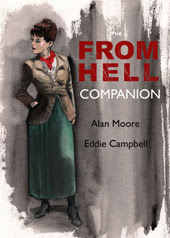


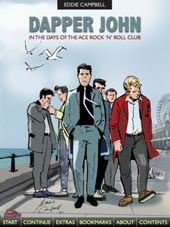
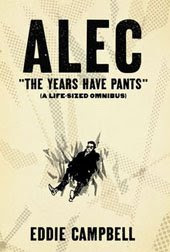
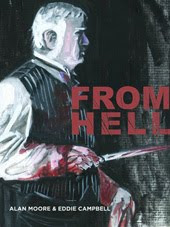
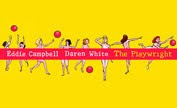
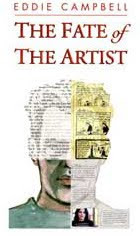
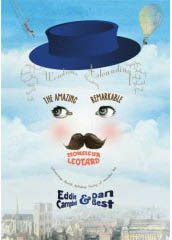





11 Comments:
for what it's worth, Colletta was using assistants by at least the late 1950s-early 1960s. Then it was folks like Matt Baker and Maurice Whitman. Not a bad team to drawing with.
your comment came in just as I was adding a line to the relevant passage. The late fifties were a time when work was scarce because of the cancellation of many publishing lines and titles. If somebody had moref work than he needed, there would have been plenty of folk around willing to help.
I kinda wonder if arguments like this happened pre comic book days, back in the days when most artists learnt via apprenticeships?
I have a beautiful book at home (Dante's inferno) illustrated by Gustave Dore. Almost all the illustrations contain Dore's signature as well as another (I presume apprentice, though could be just assistant) signature. The amount of work that each assistant has done on each illustration is immense, proven by the vastly differing styles between each picture. I even suspect that they might have worked of designs by Dore as opposed to actually "tracing" his work (I have no real evidence for this suspicion, it just feels right... is that doing a hockney?)
Maybe Scott Mcloud (not too much disrespect meant here) could put forward that these books illustrated by Dore are the first graphic novels.
I believe the additional names on Doré's pictures are those of the engraver for each plate. I've got about 12 books of his work (I was a fan, can you tell?) and Doré had a considerable team helping him. H Pisan was one of the best, he did nearly the whole of Don Quixote with Gustave and he does some of the best plates in other books.
The process was that Doré would draw the figures and outlines on the engraving plate then the engraver would add all the lines, texture and detail. That seems like Doré was skimping but he still had a considerable workload, having to sketch all those illustrations beforehand. And nearly all the books have many vignettes which are Doré's work alone. So the engraver was more like a combined inker/colourist, I suppose, rather than an apprentice.
Thanks for that info John, that clears up a lot. I have seen some of the sketches he made in preperation, and they seem as detailed as the final pictures so I never really thought he was skimping.
Lol, you just made me get out the one book I own and check for the Pisan ones, and yeah, his work is definately nice. It seems a little looser than a lot of the others. I did find a few with just Dore's name on there, and I have noticed he manages to bring out the light and dark really well, something which is lacking a bit in a lot of the ones that he had help on (help doesn't seem quite the right word, but it is close enough). Gustave Dore manages light really well, almost the opposite of Odilon Redon, who manages black so well. I dont know if that makes any sense, seeing as if you can manage one, you can manage the other just as well, but Dore's focus seems to be on light, and on line, whereas Redon's work is more about shadow and to some degree loss of detail.
I went to your blog site John, and was amazed. I had just borrowed out The haunter of the dark and other grotesque visions from my local library (i havent seen it in any book stores or comic stores as yet). It is a great book, and very disturbing in some ways (im a christian, so maybe i am easily disturbed), but i loved pouring over all the details in every illustration.
Sounds like Shatner is to blame to me.
KHAAAAN!!!!!
Thanks Matthew. I've been told the book is on sale in Australia (well Sydney anyway...) Doré was quite an influence on all that close shading, as was Berni Wrightson with his Frankenstein illustrations, a couple of which borrow directly from Doré.
Anyone who likes the Victorian atmosphere of From Hell should check out Doré's London: A Pilgrimage from 1876, based on expeditions round the capital with writer Blanchard Jerrold. Many of the views are exaggerated or romanticised but they still give a fascinating picture of the city at that time.
Never EVER trust a feeling like "sure, OF COURSE, I'll remember".
At best, you'll remember that there was something worth remembering.
Keep a pen and notepad by the bed.
Train yourself to write in the utter darkness - even just a few words - it's worth the effort
I started reading in the mid-70s, so my favorite inker for Kirby was always Royer.
The THOR masterworks are giving me a new appreciation of Coletta's work. There is an issue in the latest volume that is inked by Bill Everett, so we can get a window into how the book might have looked in other hands. Would it have been nice for Everett to ink the THOR run in its entirety? Yes, I think so, but that's just my preference. But that's not what happened. I can't believe I went so long without reading these amazingly fun tales, and Coletta's contributions are a key part of the experience.
As much as I mourn (yeah, I am a fanboy) the early Fourth World issues when I see how much more exciting the Royer inked issues are, you are right to issue a corrective to overly zealous ad hominem attacks on Colletta.
His work on Defenders Annual #4 with Don Heck (another much maligned artist of that era) was really moving (probably Gerber's adult script inspired all involved)--and hey, his 1970's Lois Lanes were pretty good.
However, did you ever see what he did to Kurt Schaffenburger's pencils?
Ah. Anyway thanks for your thoughtful post.
Post a Comment
Subscribe to Post Comments [Atom]
<< Home